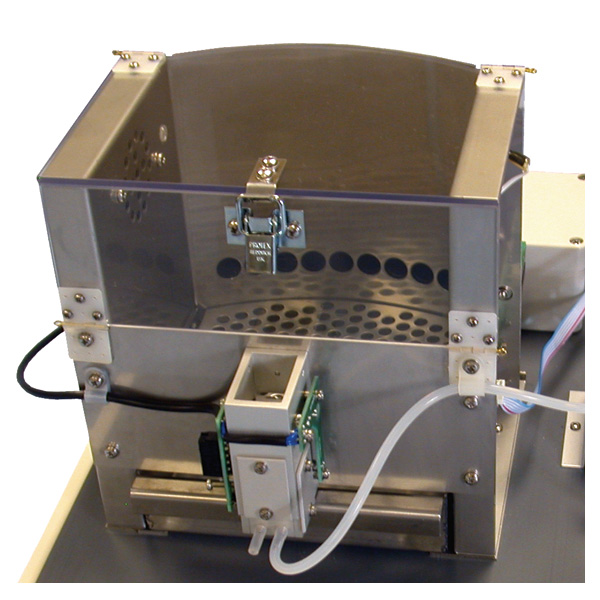
These are the original 5/9 hole chambers systems. The rat chamber developed at the University of Cambridge Dept of Experimental Psychology and the mouse chamber at the Babraham Institute, Cambridge. Software of the 5 choice serial reaction time task [5CSRT] is available as part of the BehaviourNet Control System.
A novel variation on the conventional Operant chamber used primarily for the serial 5-choice reaction time task. The nose-poke response is rapidly trained and is easier than a lever-press for the animal to execute. Nine responses can be used, rather than the usual two, allowing for the study of response sequencing. Reaction times can be separated from movement times by requiring the animal to hold its nose in one hole until signalled to move to another. Lateralisation can be studied by presenting brief stimuli to the periphery while the animal is required to hold its nose in the central hole. Discrimination can be studied parametrically by varying brightness and position of stimulus, and attention can be tested with the use of distracting lights or noises. These are just a few of the tasks to which the apparatus has been successfully applied. For a review of the 5-choice serial reaction time task see T.W Robbins, Psychopharmacology, (2002) 163, 362-380.
The mouse 5/9 hole chambers (originally designed at The Babraham Institute, Cambridge) is the only mouse operant chamber with associated published data for an attentional task for mice (Humby, Laird, Davies and Wilkinson, European Journal of Neuroscience, Vol. 11, pp. 2813-2823, 1999). The task – the serial 5-choice reaction time task (also available in human and monkey CANTAB) - is a test of sustained and selective attention, which has been well characterised in the rat and has shown clinical validity in a variety of settings, including attentional deficits in Alzheimer's disease patients.
The serial 5-choice reaction time task forms the first in what is expected to be a growing set of operant based tests in mice, allowing the exploitation of molecular genetics methods in unravelling the genetic contribution to complex psychological and behavioural processes.